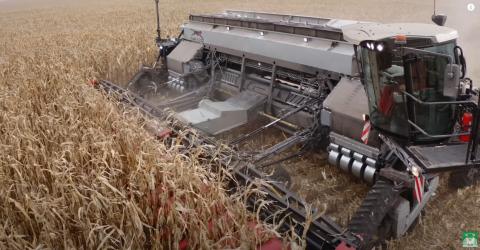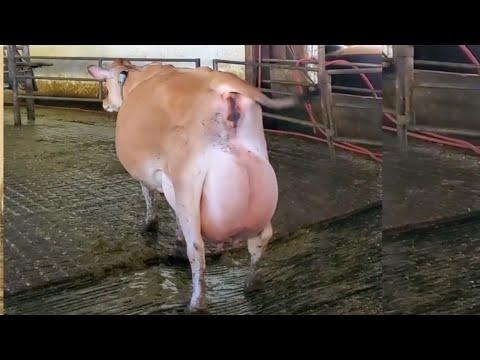What is Sunflower Bale and Straw?
Sunflower bale is a nutritious forage plant, animal feed obtained from the sunflower stalk. It is commonly made in bales rather than straw.
Benefits as Animal Feed
As in every plant, the sunflower shell covers the grain and protects it from external factors. Approximately 21-30% of the total weight of the oil sunflower seed is the shell. This rate varies between 36-50% in confectionery varieties. However, there is no significant difference between the chemical compositions of the snack and oil types, except that the snacks contain a little more fiber. There is an inverse correlation between the husk and oil ratio in the grain of sunflower. As the oil content in the grain increases, the crust ratio decreases. The oil content of a good oil sunflower hybrid variety should be above 50% and the shell ratio should be around 20%. Both oil and snack grains contain high fiber (crude fiber) and low amounts of crude oil and ash. The amount of cellulose, lignin, hemi-cellulose (mostly glucuronoxylan) in the shell is 74-90%, and the remaining part is lipid, protein and mineral substances (Dorrel and Vick, 1997). The nutrient content of the shell is given in the table below. Nutrient Content of Sunflower Shell
85-92% Dry Matter 3.5-9% Crude Protein 2-4% Digestible Protein 35-45% Total Digestible Nutrient Total 40-50% Crude Cellulose 13-16% Lignin 2-3% Ash 0.05-3% Fat 0.37% Ca 0.15-0.25% Mg 0.12% P
In the researches, in some factories that process sunflower in our country, the shell is completely used to obtain pulp, while in some factories, especially when high protein pulp is desired, it comes out as an additional product of approximately 7-12%, and in this case, it is mixed with coal to meet the energy need in heating boilers.
Sunflower does not contain any harmful substance unless the whole grain and only the shell are treated with any chemical substance. However, carbon dioxide and other gases released into the atmosphere during the combustion process are the same as when using other fuel products. However, the shell that emerges as this additional product also has alternative uses. In addition, it occurs as an additional substance in the consumption of unshelled sunflower for snacks. However, this type of consumption is not very common in our country. The husk ratio is higher in confectionary sunflower varieties than in oil oil. Oilseed sunflower shells are a good source of feed for animals, as they contain higher protein and fat compared to snack types. Sunflower pods can be used as litter instead of straw in cattle breeding. Because it has the same liquid absorption capacity as straw. In addition, these shells are used as filler and insulation material in the timber industry, in the production of biofuels and as packaging material. In addition, it is used to obtain kindling material by pressing in the form of cylinders in Canada and to obtain ethyl alcohol and paint materials in Russia.
Another usage area of sunflower husk, especially in some species, is to use it as a natural additive dye in foods because of the red dye known as anthocyanin it contains in the husk. As it is known, on the side effects of artificial colorants used in the food industry, natural anthocyanin sources that give red and pink color have gained importance. In studies conducted, no nutritional defect was observed in rations containing up to 50% of sunflower shells, but containing at least 15% crude protein in calf and cattle breeding. However, in rations containing 50% sunflower husk, 50% urea added corn silage and 1.4 kg/head of barley, some cattle deaths were observed during the feeding period due to digestion difficulties. For this reason, the same researchers emphasized that in order to avoid any nutritional or digestive problems, the contribution of sunflower shell should not exceed 30% in fattening rations and 10% in milk fattening rations. Sunflower husk contains a high percentage of cellulose, but has a low nutrient content and is difficult to digest and unpleasant to taste. Again, pelleted sunflower husk has a higher heat content than briquetted straw. However, this pelletized shell has a low enough air intake rate to prevent overheating and excess smoke during combustion. The average combustion efficiency of the pellets is 62%. Ash rate and other properties of ash are not different from wood. However, while the ash content of the straw briquette is 10.8%, it is 3.6% of the shell pellets. Again, the fuel value of sunflower husk ranges around 8300 - 8500 BTU/pound. Some establishments such as sunflower processing plants and schools in the USA use these shells as fuel in furnaces. The use of briquettes made from sunflower shells is quite common in some places in the USA instead of coal in fireplaces. In the USA, since sunflower shells constitute a certain volume in the transportation costs of sunflower processing factories, it is generally more economical to remove the shell and sunflower shell fuel is used.
- Category
- Tractor & Machinery












